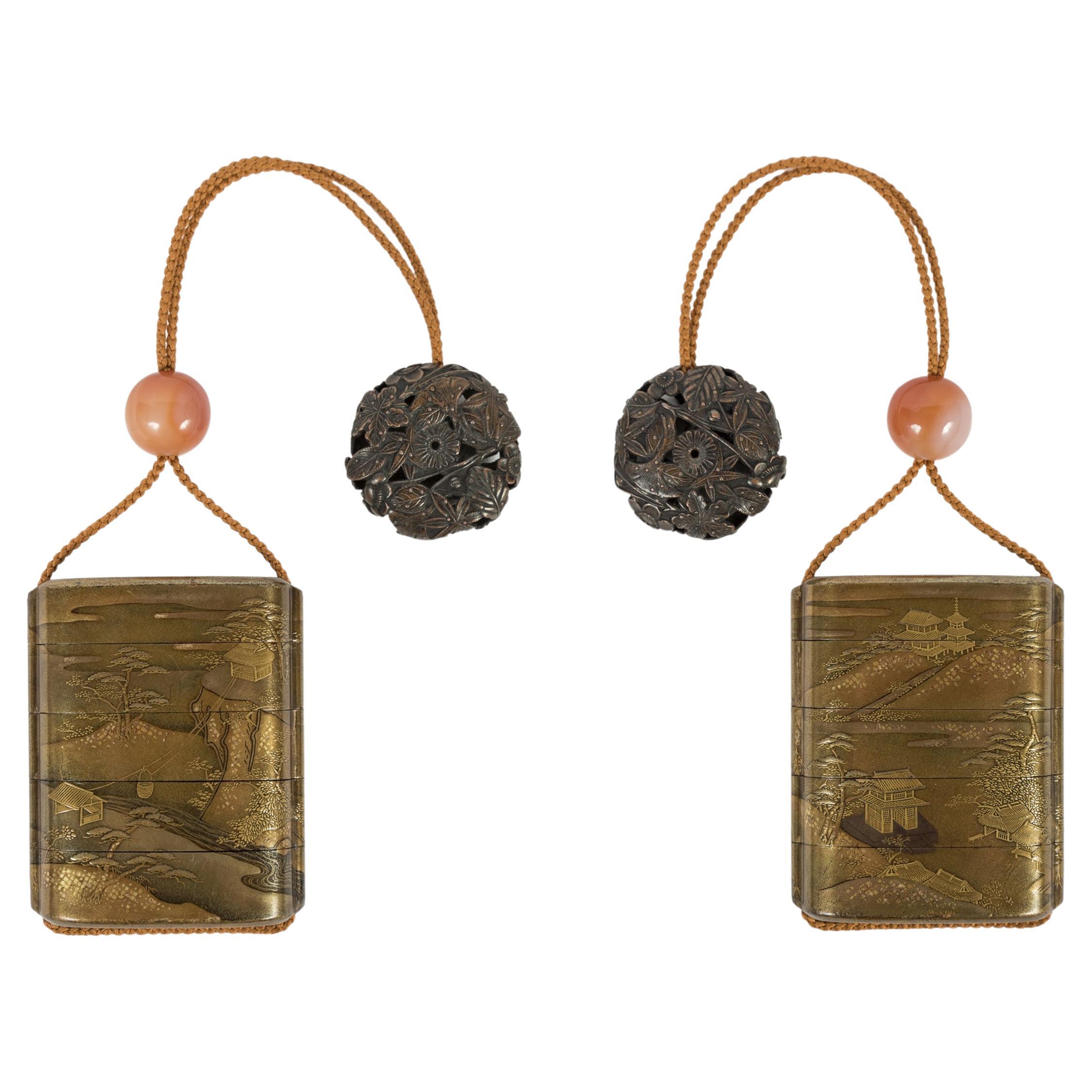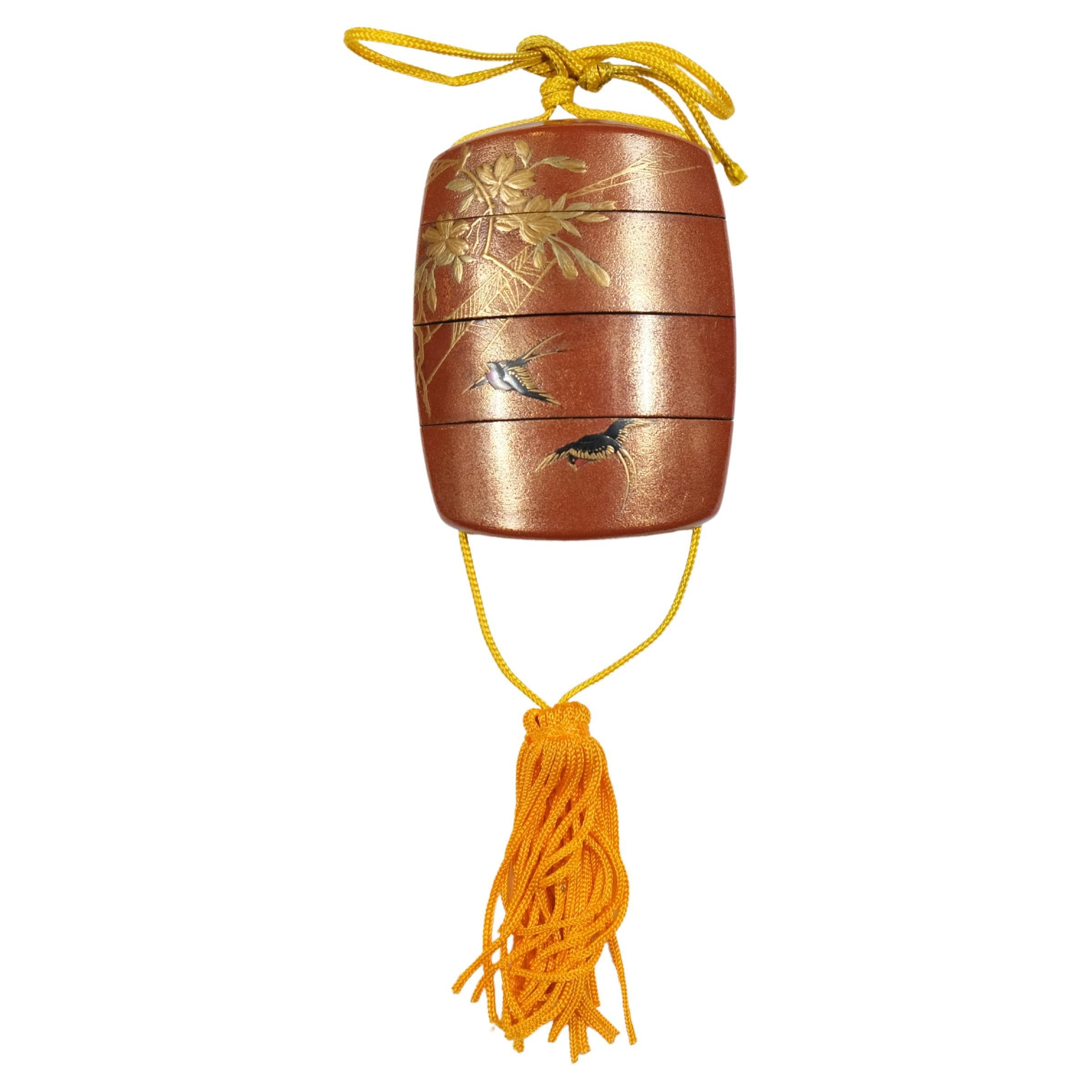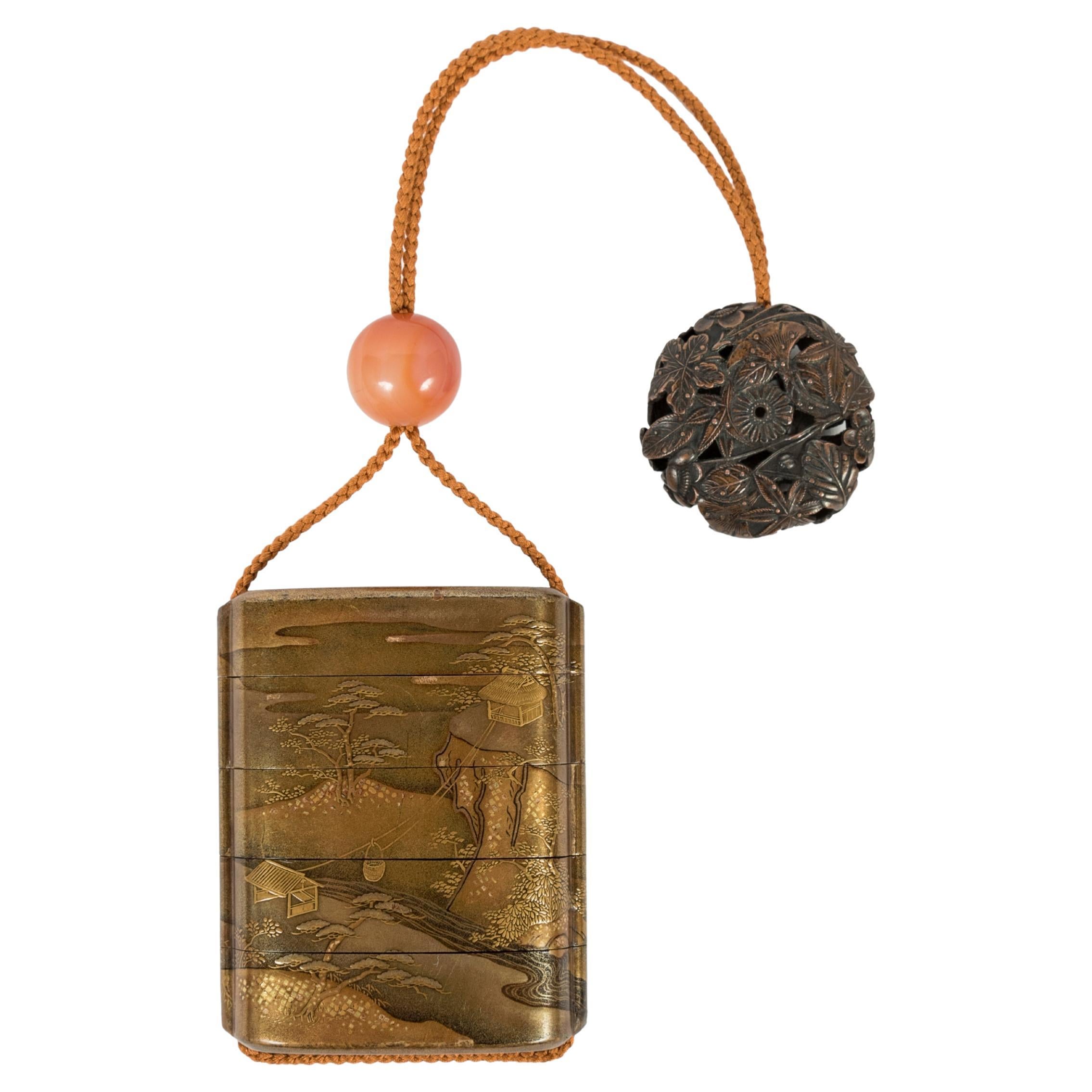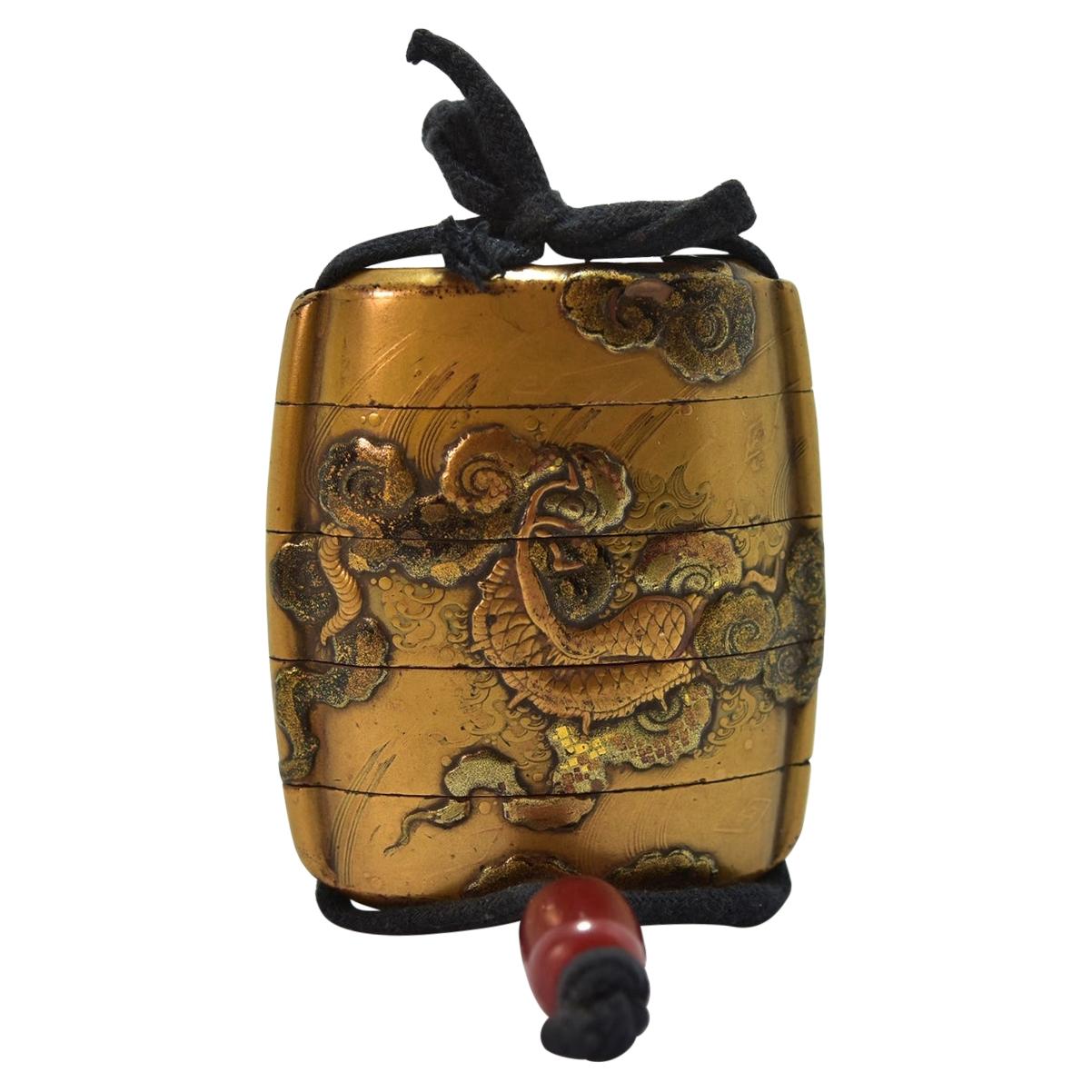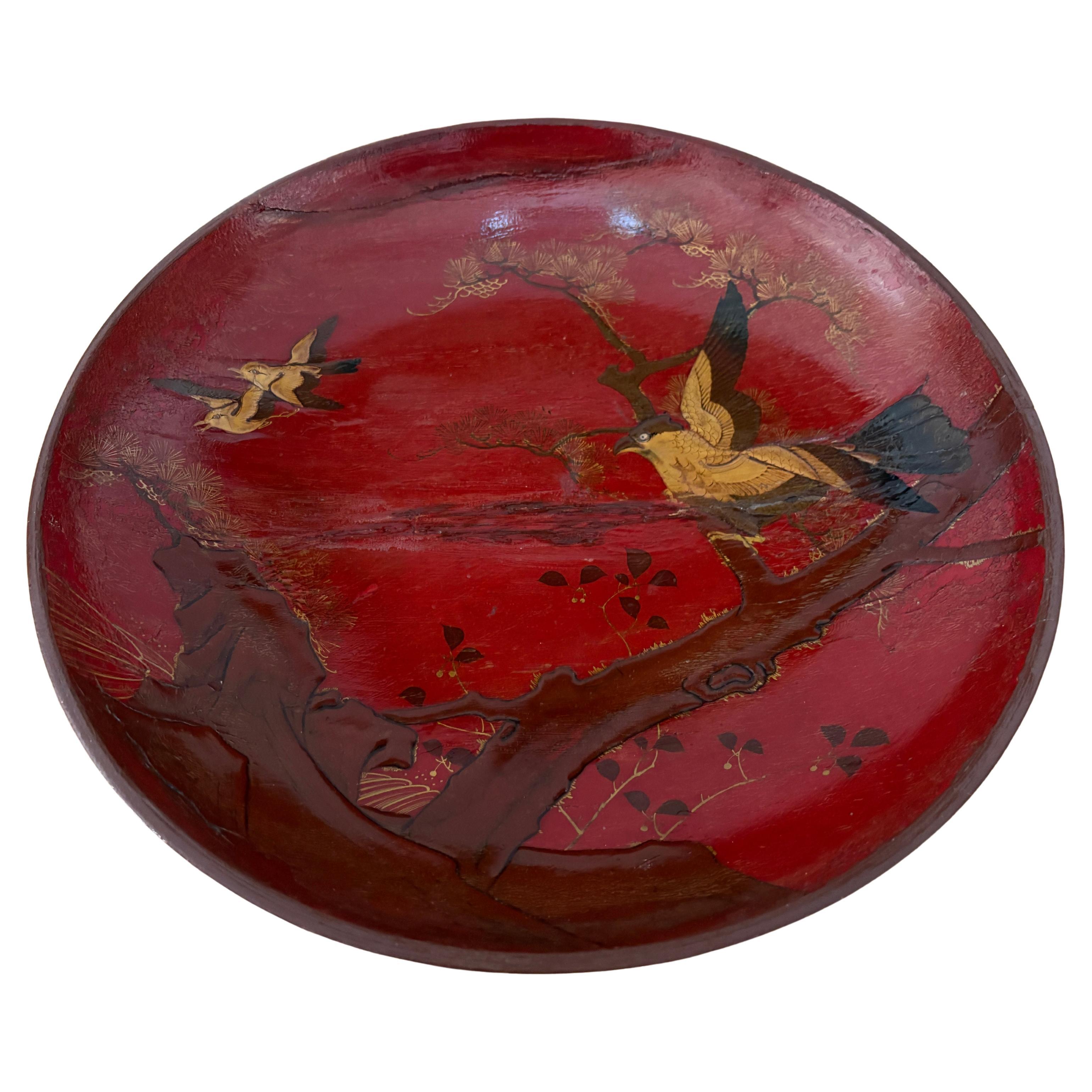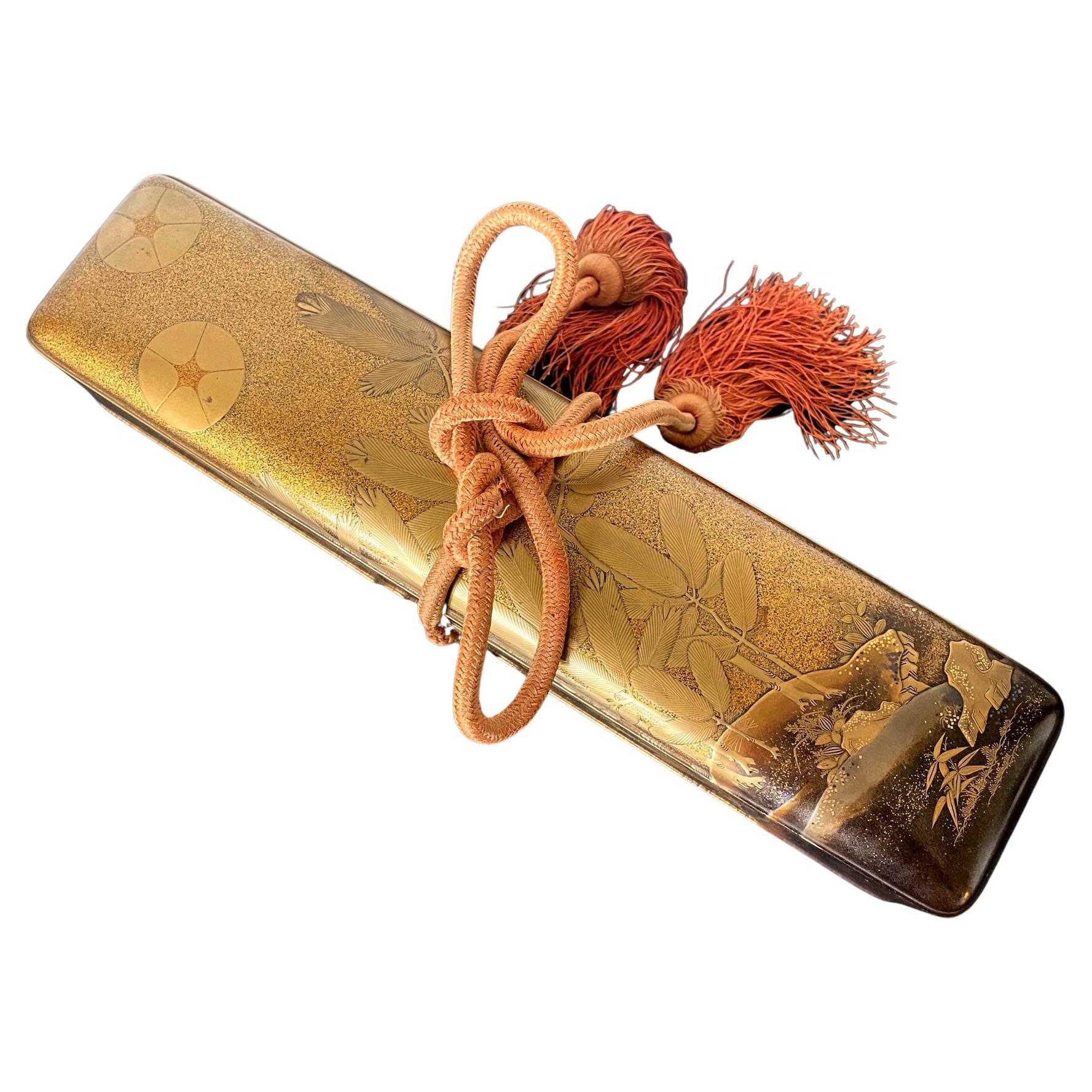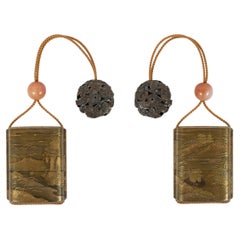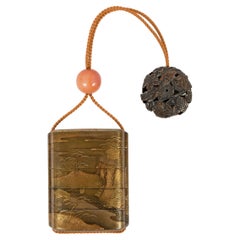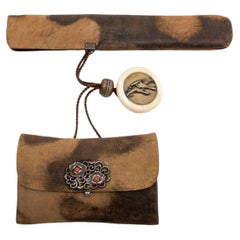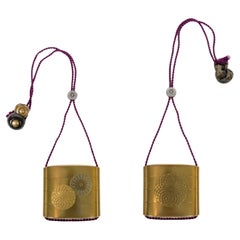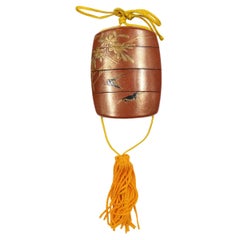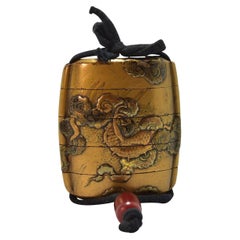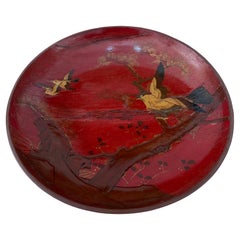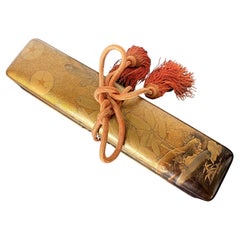Items Similar to Inro Dragon
Want more images or videos?
Request additional images or videos from the seller
1 of 10
Inro Dragon
$11,977.40
£8,875.91
€10,000
CA$16,351.42
A$18,190.29
CHF 9,535.58
MX$222,280.90
NOK 121,423.69
SEK 114,303.60
DKK 76,139.12
Shipping
Retrieving quote...The 1stDibs Promise:
Authenticity Guarantee,
Money-Back Guarantee,
24-Hour Cancellation
About the Item
Beautifull inro of six compartments made of black gold, silver and tin lacquer,
representing a dragon on each side, surrounded by black and silver clouds, the inside
is made of nashi-ji lacquer. This variety of color texture is obtained by mixing raw
lacquer with metallic powder. Inro sold with its ojime and netsuke, representing a
tiger with incrusted eyes, made of buffalo horn.
In Japan, the dragon (called Ryu) is a symbol of great importance and wealth for
centuries. Until the end of the Edo period, it was a theme for the elite, but with the
economic growth of the Meiji era it became widely available in Japanese culture.
Japan – Edo era (1603-1868)
Inro : height: 8 cm - Length 6 cm – Depth : 2.5 cm
Ojime : diameter 2,5 cm
Netsuke : height : 3,5 cm - length 5 cm
- Dimensions:Height: 3.15 in (8 cm)Width: 2.37 in (6 cm)Depth: 0.99 in (2.5 cm)
- Style:Japonisme (Of the Period)
- Materials and Techniques:Lacquer,Lacquered
- Place of Origin:
- Period:
- Date of Manufacture:1603-1868
- Condition:Wear consistent with age and use.
- Seller Location:PARIS, FR
- Reference Number:Seller: 2024-12911stDibs: LU8311242492642
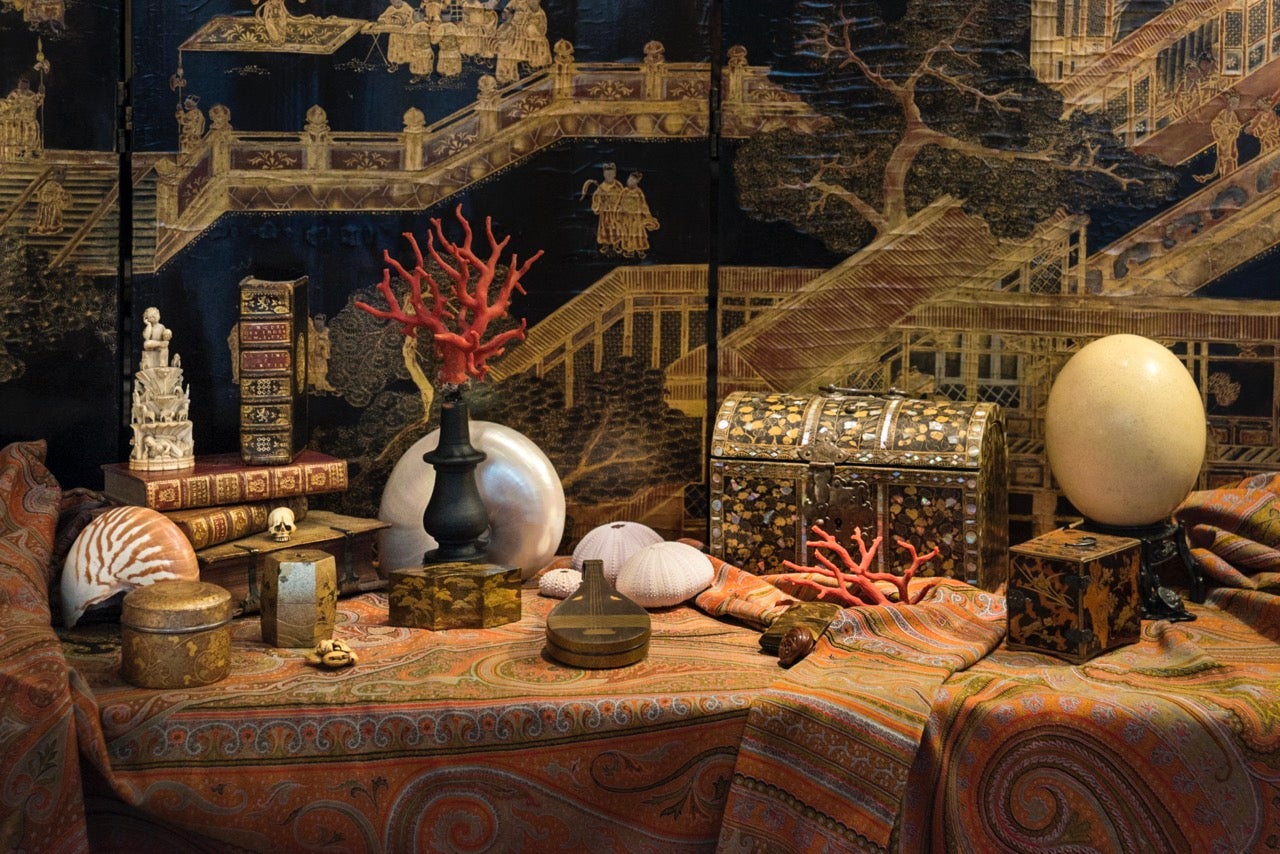
About the Seller
No Reviews Yet
Vetted Professional Seller
Every seller passes strict standards for authenticity and reliability
Established in 2013
1stDibs seller since 2023
Typical response time: Several days
- ShippingRetrieving quote...Shipping from: PARIS, France
- Return Policy
Authenticity Guarantee
In the unlikely event there’s an issue with an item’s authenticity, contact us within 1 year for a full refund. DetailsMoney-Back Guarantee
If your item is not as described, is damaged in transit, or does not arrive, contact us within 7 days for a full refund. Details24-Hour Cancellation
You have a 24-hour grace period in which to reconsider your purchase, with no questions asked.Vetted Professional Sellers
Our world-class sellers must adhere to strict standards for service and quality, maintaining the integrity of our listings.Price-Match Guarantee
If you find that a seller listed the same item for a lower price elsewhere, we’ll match it.Trusted Global Delivery
Our best-in-class carrier network provides specialized shipping options worldwide, including custom delivery.More From This Seller
View AllGold Lacquer Inro Decorated with a Lake Landscape
Located in PARIS, FR
Inro with four gold lacquer boxes, decorated with a lake landscape. Accompanied by a bronze ryusa manju.
Small boxes formed of compartments that fit one on top of the other, inro (? ?) are traditional Japanese clothing...
Category
Antique Mid-19th Century Lacquer
Materials
Lacquer
Japanese inro of the edo period adorned with a landscape houses near a lake
Located in PARIS, FR
Inrō with four gold lacquer compartments, decorated with a lake landscape. Accompanied by a bronze ryusa manju.
Small boxes formed of compartments that fit one on top of the other, i...
Category
Antique Late 18th Century Japanese Edo Lacquer
Materials
Gold
Japanese Smoking Set 'Tabac-Ire'
Located in PARIS, FR
Smoking set (tabako-ire) composed of a pipe (kiseru), a pipe case (kiseruzutsu) and a tabacco pouch (tonkotsu) for women linked to a netsuke.
Intended f...
Category
Antique Late 19th Century Japanese Antiquities
Materials
Metal
Japanese lacquered Inro chrysantemum
Located in PARIS, FR
Beautifull Inro of three compartments made in kinji lacquer with an hiro maki-e
ornament chrysanthemum flowers of gold and silver lacquer. Inside is in fundame
lacquer.
Signed by J...
Category
Antique Mid-18th Century Japanese Lacquer
Materials
Lacquer
Japanese golden kobako flowers Edo period 18th century
Located in PARIS, FR
Quadrangular kobako box decorated with flowers in gold and blue lacquer with aogai inlay. Lid and sides in fundame lacquer, underside and interio...
Category
Antique 18th Century Japanese Japonisme Lacquer
Materials
Gold
Japanese inro box in black and gold lacquer with a decor of snowy landscape
Located in PARIS, FR
Inrō with four boxes in black and gold lacquer, representing a person in a pavilion in a snowy landscape with mountain on the background. Realised in maki-e on black lacquer with sma...
Category
Antique Late 18th Century Japanese Edo Lacquer
Materials
Gold
You May Also Like
Lacquer inro, Japanese, Late 19th c.
Located in Stockholm, SE
A fourpart Japanese lacquer Inro. the lacquer is red with motives of a spider with its web in gold and two flying cranes. The lowest part of the inro has a crack on one side.
Category
Antique Late 19th Century Japanese Lacquer
Materials
Lacquer
Japanese Inro with 4 Boxes in Gold Lacquer with Mat Kinji Background
Located in Marseille, FR
19th century Japanese inro with 4 boxes in gold lacquer with kinji mat background decorated in taka makiyé of gold of different tones. Lacquered wood siz...
Category
Antique 19th Century Japanese Japonisme More Asian Art, Objects and Furn...
Materials
Giltwood
large lacquer plate
Located in VILLENEUVE-LÈS-AVIGNON, FR
Large wooden and red/gold lacquer plate
Edo Period (1603-1868) Japan
Category
Early 20th Century Japanese Edo Lacquer
Materials
Wood, Lacquer
$2,096
Japanese Lacquered Gold Maki-E Naga Fubako Meiji Period
Located in Atlanta, GA
A Japanese lacquered wood Naga Fubako (a long box used to store document or large scroll painting), circa 19th century Meiji period. The rectangular box features an unusually deep lipped lid with slightly rounded corners, a conforming lower box with bronze medallion rings with tasseled...
Category
Antique 19th Century Japanese Meiji Lacquer
Materials
Wood, Lacquer
Elegant Japanese Edo Period Rack
Located in New York, NY
This refined object dates to the first half of the 19th century, and was probably used for obi, kimono sashes, which were hung over it. The gold decorations on the black-lacquered g...
Category
Antique 1830s Japanese Edo Lacquer
Materials
Lacquer
Meiji Temple Dragon Panels
Located in Fukuoka, JP
Magnificent Meiji-era temple panel is traditionally placed above the entrance, gracing the space with spiritual protection and aesthetic beauty. Each panel vividly depicts a dragon, ...
Category
Antique Late 19th Century Japanese Meiji Sculptures and Carvings
Materials
Gold Leaf
